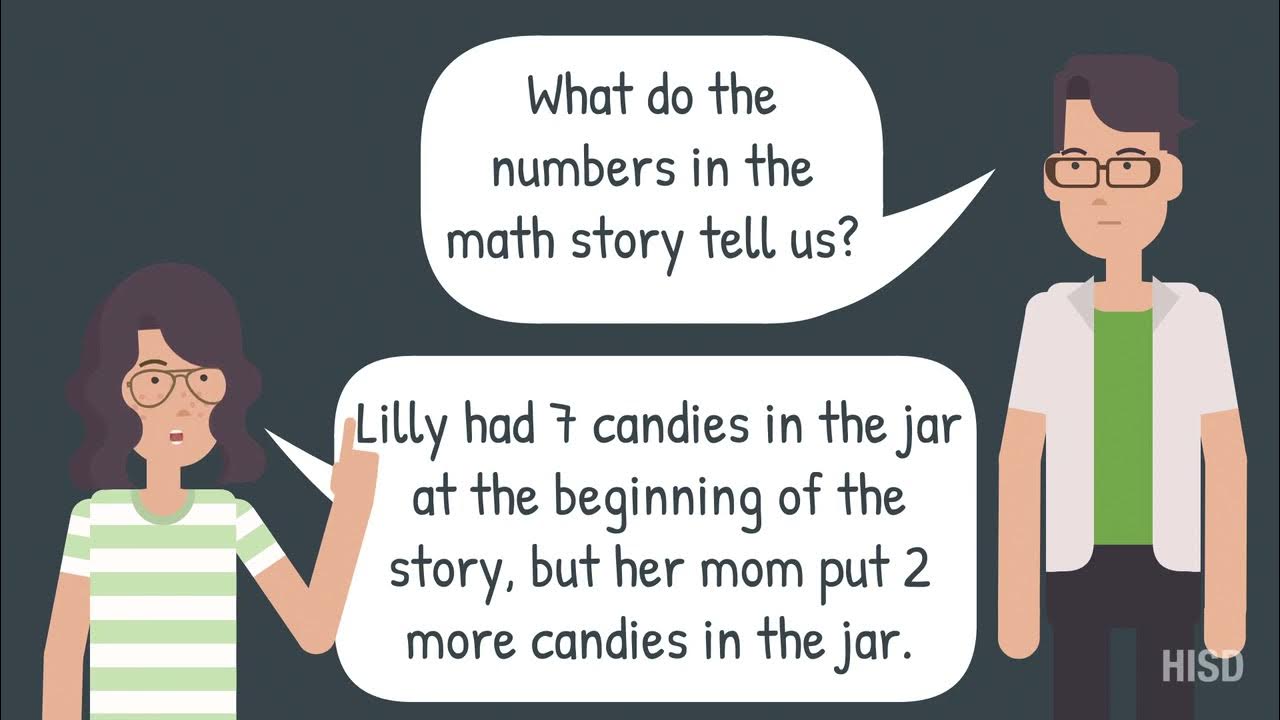Addition Problem Solving
Summary
TLDRIn this lesson, students learn how to solve addition problems using key math concepts. The video explains terms like equation, addition, addend, and sum. Through a real-world problem involving cookies at a bakery, students practice the 3 Read Strategy and use place value charts to add numbers. The lesson demonstrates the use of base ten blocks and the standard algorithm to regroup and add values, showing that the bakery baked a total of 720 cookies. The engaging lesson reinforces addition skills and encourages students to think of alternate ways to solve the problem.
Takeaways
- 📚 The lesson focuses on solving math problems involving addition.
- 🧮 An equation is defined as a number sentence that includes an equal sign.
- ➕ Addition is the operation of combining two or more numbers to find the sum.
- 🔢 An addend is a number being added or joined together with another number.
- ✅ The sum is the total when two or more addends are combined.
- 🍪 The bakery baked 348 peanut butter, 252 chocolate, and 120 caramel cookies, and the task is to find the total number of cookies.
- 📝 The 3 Read Strategy is used to break down the problem: understanding the story, identifying the question, and determining known and unknown information.
- 🧱 Base ten blocks and a place value chart are used to visually represent and solve the addition equation.
- 🔄 The lesson teaches how to regroup ones and tens when necessary, moving them to the next place value.
- 🎉 The total number of cookies baked by Houston's bakery is 720, and the lesson reinforces addition with base ten blocks and the standard algorithm.
Q & A
What is an equation?
-An equation is a number sentence that includes an equal sign.
What is addition?
-Addition is the operation of combining two or more numbers to find the sum.
What is an addend?
-An addend is a number being added or joined together with another number.
What is the sum?
-The sum is the total when two or more addends are joined.
What is the story in the problem about?
-The story is about a bakery that is baking cookies of different flavors for the weekend.
What question is being asked in the problem?
-The question is asking how many cookies Houston's bakery baked for the weekend altogether.
What do we know and what do we need to know to solve the problem?
-We know that Houston's bakery made 348 peanut butter cookies, 252 chocolate cookies, and 120 caramel cookies. We need to know the total number of cookies the shop baked.
How can we find the total number of cookies baked?
-We can use a Part-Part-Whole map to understand that we need to join all the parts (peanut butter, chocolate, and caramel cookies) to find the whole.
How do we represent the addends with base ten blocks?
-348 can be represented with 3 hundreds, 4 tens, and 8 ones; 252 can be represented with 2 hundreds, 5 tens, and 2 ones; and 120 can be represented with 1 hundred and 2 tens.
How do we use a place value chart to add the numbers?
-We start by adding the ones, regrouping if necessary, then add the tens and regroup again if necessary, and finally add the hundreds.
What is the final sum of 348, 252, and 120?
-The sum of 348, 252, and 120 is 720.
How many cookies did Houston's bakery bake for the weekend altogether?
-Houston's bakery baked a total of 720 cookies for the weekend.
What alternative method could be used to solve this problem?
-An alternative method could be using the standard algorithm to add the numbers up to the hundreds.
What did we learn from today's lesson?
-We learned how to use base ten blocks to represent and add numbers, and we also used the standard algorithm to add numbers up to the hundreds.
Outlines

このセクションは有料ユーザー限定です。 アクセスするには、アップグレードをお願いします。
今すぐアップグレードMindmap

このセクションは有料ユーザー限定です。 アクセスするには、アップグレードをお願いします。
今すぐアップグレードKeywords

このセクションは有料ユーザー限定です。 アクセスするには、アップグレードをお願いします。
今すぐアップグレードHighlights

このセクションは有料ユーザー限定です。 アクセスするには、アップグレードをお願いします。
今すぐアップグレードTranscripts

このセクションは有料ユーザー限定です。 アクセスするには、アップグレードをお願いします。
今すぐアップグレード関連動画をさらに表示

Solving Addition Math Problems | Elementary Math

Grade 10 Math Q1 Ep1: Generate Patterns from a Succession of Objects, Numbers, Letters & Symbols

Module 8 Math: 8 B Making Math Connections Explicit

MATH 6 QUARTER 2 WEEK 7 LESSON 2 | COMPARING AND ARRANGING INTEGERS

FINDING PERCENTAGE, RATE, & BASE | GRADE 6

Kaidah pencacahan | aturan penjumlahan-aturan perkalian-filling slot pengisian tempat
5.0 / 5 (0 votes)
